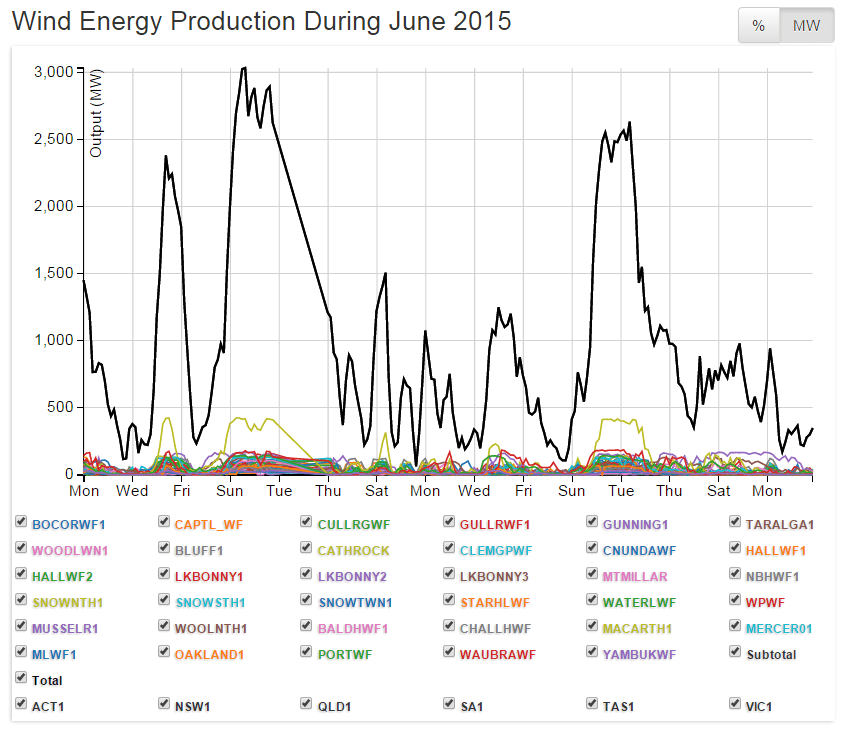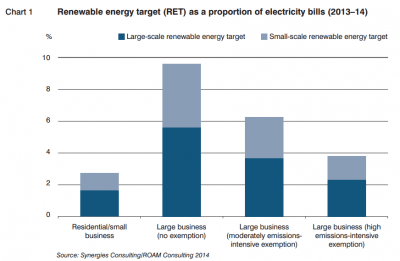****
STT followers are painfully aware that the wind industry exists – and ONLY exists – to wallow in an endless stream of subsidies filched from power consumers and/or taxpayers:
The Wind Industry: Always and Everywhere the Result of Massive & Endless Subsidies (Part 1)
The Wind Industry: Always and Everywhere the Result of Massive & Endless Subsidies (Part 2)
One of the sillier claims made by wind-worshippers is that to focus on the massive pile of cash added to power bills and directed to these things, is to overlook what are said to be ‘colossal subsidies’ paid to BIG COAL and BIG GAS.
However, like most eco-fascist fictions, scratch the surface of their fossil-fuel subsidy myth, and you’ll find that there’s nary a tad of subsidy directed to electricity producers using coal or gas (see above).
True it is that solar generation is well soaked in subsidy (see above), but that’s to limit the analysis to the cost per MWh delivered to the grid.
Wind power – provided the subsidies keep flowing – is (occasionally) delivered in commercial quantities. Wind farms connected to the Eastern Grid sometimes deliver around 75% of their 3,669MW installed capacity – at least for a few short hours – until the whole outfit completely downs tools, and produces a tiny fraction of that, or even next-to-nothing, for hours; and even days at a time:
The Wind Power Fraud (in pictures): Part 2 – The Whole Eastern Grid Debacle
Solar, however, is, in the main, generated on the rooftops of domestic dwellings; and barely adds 1% to total power production in Australia – there is very little ‘large-scale’ solar in Australia, as yet.
So, while the subsidy per MWh for solar is colossal, its impact on retail power prices pales by comparison to what is pocketed by the wind industry. Here’s a little wrap-up from the Minerals Council on a report put together by Principal Economics.
The high cost of renewable energy subsidies
Minerals Council
Brendan Pearson
7 August 2015
A report, undertaken by economic consultancy Principal Economics, has found that Australia’s renewable energy sector received subsidies (including the Renewable Energy Target, feed in tariffs and other green policy costs) worth $2.8 billion in 2013-14. This dwarfed the public support for research and demonstration projects for low emissions coal technologies being conducted by the CSIRO and other research bodies (and matched by the coal industry).
On an output basis, these renewable subsidies translated into almost $412 per megawatt hour (MWh) for solar technologies, $42 per MWh for wind and $18 per MWh for all other renewable sources (including hydro).
By comparison coal fired power received less than $1 per MWh and natural gas less than 1 cent per MWh delivered.
In 2013/14, these renewable energy subsidies added between 3 to 9 per cent to the average household bill and up to 20 per cent for some industrial users.
The report uses the World Trade Organisation’s definition of subsidies, an approach similar to the method used by the Productivity Commission in its annual Trade and Assistance Review.
At face value, increasing Australia’s share of renewable energy is a laudable goal. The minerals industry is a user of renewable energy and hopes that it will provide a solution to provision of competitively priced energy, especially in remote areas. And renewable energy depends on the minerals sector – after all, every off shore wind turbine contains 250 tonnes of metallurgical coal.
But renewable energy must win increased market share on its own merits, not be guaranteed it by expensive mandatory targets and feed-in tariffs, the cost of which is simply borne by householders and industrial users. For household consumers, the burden falls heaviest on low income households. For industrial users, the burden shackles export and import-competing businesses in many sectors.
Minerals Council
You can read the report in full here: Electricity production subsidies in Australia.
Here’s an important little snippet from the report.
Implications for electricity customers
Principal Economics
2015
While the cost of public support financed through government budgets is recovered from taxpayers, the subsidies created by the RET and FiT schemes are levied on electricity customers.
Given the very large sums involved, the impacts on electricity bills for households and businesses have been substantial.
Estimates of the impacts of the RET and FiT schemes on customer bills vary. According to the Australian Energy Market Commission (AEMC, 2014), an average household paid around $109 per annum in South East Queensland, $107 in New South Wales and $155 in South Australia for the combined LRET, SRES and FiT components of household bills in 2013-14. These payments are estimated by the AEMC to make up between 3 and 9 per cent of annual household bills. In contrast, the Independent Pricing and Regulatory Tribunal (IPART, 2013) estimated the combined costs of the RET and FiT schemes for a typical residential customer in New South Wales at around $145 in 2013-14.
ROAM/Synergies Consulting (2014) considered the impacts of renewable schemes on electricity bills of households and businesses, and concluded that the RET accounts for a significant component of bills (Chart 1). ROAM/Synergies estimate that during 2013-14, the RET comprised 3 per cent of the typical household or small business electricity bill and 9.6 per cent for a large business that consumes more than 5 GWh of electricity per annum and is not eligible for partial exemption certificates. They conclude that, as is the case for other renewable schemes, the LRET and SRES contribute a relatively higher percentage of costs for large businesses.
According to ROAM/Synergies (2014), state-based energy policies – of which FiT schemes are by far the most costly – impose comparable or higher costs than the LRET and SRES combined. They estimate that these state-based schemes account for up to 12 per cent of the electricity bill for a large business.
***
***
Overall, ROAM/Synergies highlight the proliferation of green energy policies over the last decade at both the federal and state level and the significant cumulative impacts of these policies:
- For residential and small business customers, green energy policies (excluding a carbon price) represents 5 per cent of electricity bills
- For large business customers, green energy policies represent around 20 per cent of electricity bills (with the RET up to 9.6 per cent and state-based schemes up to 12 per cent respectively) excluding carbon price.
Looking forward, the burden on electricity customers as a result of the RET and FiT schemes is unlikely to diminish:
- While the most generous FiT schemes have now been closed to new applicants, the obligations entered into by state governments imply that considerable subsidies will continue to have to be paid to eligible households for many years into the future. For instance, the Queensland Competition Authority (QCA 2013) has estimated that Energex and Ergon Energy will incur accumulated feed-in tariff payments of around $2.9 billion by the end of the scheme in 2028, and that these costs will flow directly through to network charges and electricity bills.
- The RET will similarly continue to represent a significant burden on customers. The LRET has been revised to achieve a target of 33,000 GWh in 2020 (Australian Government 2015), almost double the 2014 target of 16,950 GWh. No changes have been made to the SRES, which will continue to offer significant financial incentives for customers with PV installations by legislating demand for the corresponding certificates.
Like most efforts to tally up the insane costs of Australia’s Renewable Energy Target, Principal Economics largely takes the “rear-view mirror” approach, by focusing on what’s been and gone. Although, in the very last dot point above its at least noted that the LRET target doubles – from its current annual target of 16,950 GWh – to 33,000 GWh by 2020 – at which poverty inducing and economy killing level it remains until 2031.
STT has, instead, had its eyes peeled on the road ahead, from the very beginning, as did Victorian Senator, John Madigan, when spelling out in his speech to the Senate, that the future cost of the LRET will add $45 billion to retail power bills, in terms of the REC Tax/Subsidy alone:
But even that horrifying prospect for Australian power punters, is to ignore the chaos that attempting to integrate a wholly weather dependent power generation system has on power markets, such as Australia’s so-called wind power capital – and resultant economic basket case – South Australia:
So, with the Coalition’s 33,000 GWh LRET target – and Labor’s plan for a 100,000 GWh target – Australia’s poorest and most vulnerable can look forward to eating tins of cold baked beans, while sitting freezing (or boiling) in the dark.





The wind industry supporters are trying desperately to try and change the focus of peoples attention away from turbines. Unfortunately for them it is not working because now people are coming to recognise the ploy.
They couldn’t demonise those suffering or those helping those suffering enough to stop Members of Parliament and others recognising the danger of this industry – yes they got away with it for a while but once the toll of sufferers began to be spoken off along with the cost to the people, the environment and the uselessness of this form of energy production, the genie was out of the bottle, and they have not been and will not be able to cram it back in.
They have been unable to counter the truth, no matter how many programs they commence or how many organisations they take over or create can stop the truth now. The AMA, CEC, AWA and others cannot stop the downward spiral.
With a website such as STT with its factual accounts and stories
and http://www.energy.anero.id.au/wind-energy which is available for anyone to check, utilise and see how useless this energy source is to provide an ESSENTIAL SERVICE makes their job even harder.
That a Senate Committee has conducted an astonishingly comprehensive inquiry and brought down such sensible and needed Recommendations will certainly ensure this industry is now on the back foot and being scrutinised like never before.
Reblogged this on citizenpoweralliance.